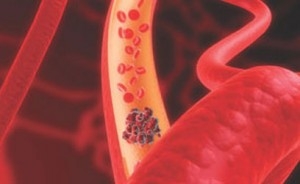In the latest volume of the Annals of Emergency Medicine, two articles discuss one of the most prominent complaints in any emergency department; pain. Pain is both difficult to evaluate and treat; numeric scoring of pain is frequently inaccurate, and the amount of medication required varies between individuals, leading to ineffective treatment and decreased patient satisfaction.
Dr. Chang et al.’s article Efficacy of an Acute Pain Titration Protocol Driven by Patient Response to a Simple Query takes the discussion of pain management back to the basics.(1) Although useful for research and utilized to meet standards set by The Joint Commission, numeric pain scoring has been found to be inaccurate and does not identify if a patient requires further analgesia. In this study, the practice of numeric scoring for pain reassessment was replaced with a simple question; “Do you want more pain medication?” Over four hours, a maximum of 4 doses of 1mg hydromorphone were given depending on patient response. 55% of study participants received only one dose of medication, and 97% of study participants were either very satisfied or satisfied with their pain treatment. While concerns for drug-seeking behavior are valid, only 3% of patients requested all four doses, and only 1% of the patients requested more than four doses of medication.
Drs. Green and Baruch dive deeper with a discussion of the history of pain scales as a way to meet Joint Commission mandates for pain screening. As most practitioners are aware, pain scales vary wildly between patients and are not predictive of a patient's analgesia requirements. In many cases, Green writes, it is more helpful to have a description of pain and inquire about analgesia needs, more so than to improve a surrogate number.
While Dr. Chang's study did not specifically identify causes of pain within the study population, it broaches important questions about how we are treating pain. With the current national epidemic of opioid abuse, physicians are in the unenviable position of both treating pain while preventing overuse. As discussed by Dr. Green, numeric pain scoring can lead to increased administration of analgesics, while many patients are willing to forgo opioid pain medications. These articles show asking a simple question can help adequately control pain and increase satisfaction.
Sources:
-Chang A.K., Bijur P.E., Holden L., et al: Efficacy of an acute pain titration protocol driven by patient response to a simple query: Do you want more pain medication? Ann Emerg Med 2016; 67: pp. 565-572
-Green SM, Krauss BS, The Numeric Scoring of Pain: This Practice Rates a Zero Out of Ten. Ann Emerg Med 2016; 67(5):573-5. doi:10.1016/j.annemergmed.2015.06.002.
Evan Kuhl, MD is an Emergency Medicine Resident at The George Washington University Hospital





